In the realm of wargame development, one of the most challenging and intriguing aspects is simulating the intricacies of combat. It’s a domain where understanding the dynamics of battle can make or break the gaming experience. In this blog post, we’ll dive into the mechanics of how battles are calculated and explore the ripple effects of losses and wounded or destroyed units in a wargame.
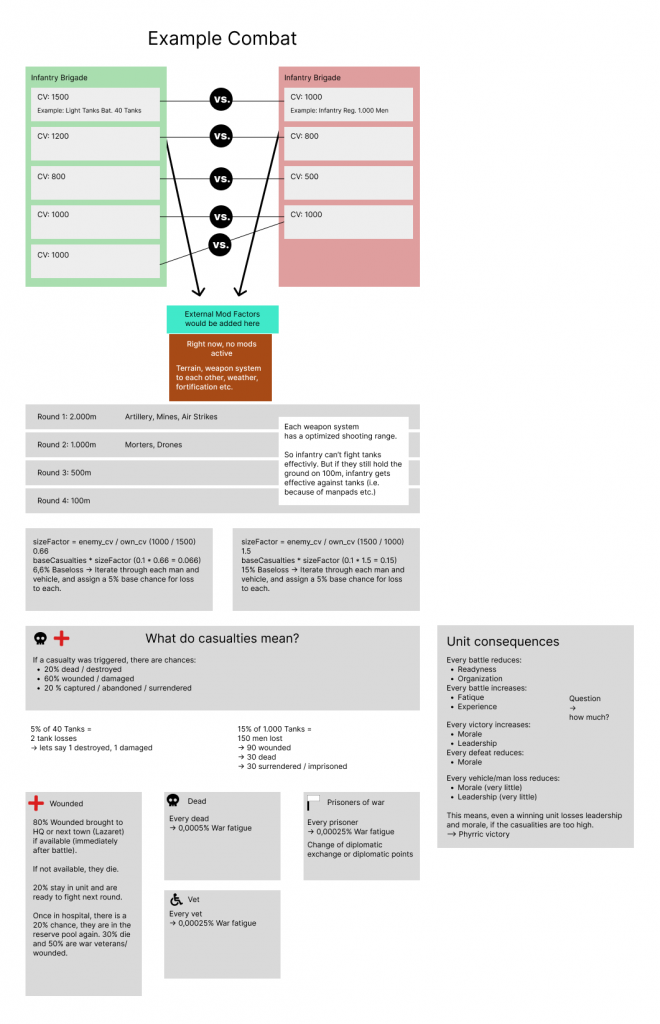
Crafting the Scenario: Infantry Brigade vs. Tanks
Picture yourself in the shoes of a game developer, tasked with creating a realistic combat scenario. You’ve chosen to simulate an intense face-off between an infantry brigade and a formidable armored force. The infantry brigade possesses a Combat Value (CV) of 1000, while their adversary boasts a higher CV of 1500. The enemy’s arsenal includes 40 formidable tanks, while your infantry regiment is made up of 1000 soldiers. It’s a classic David vs. Goliath encounter, and every aspect must be meticulously considered.
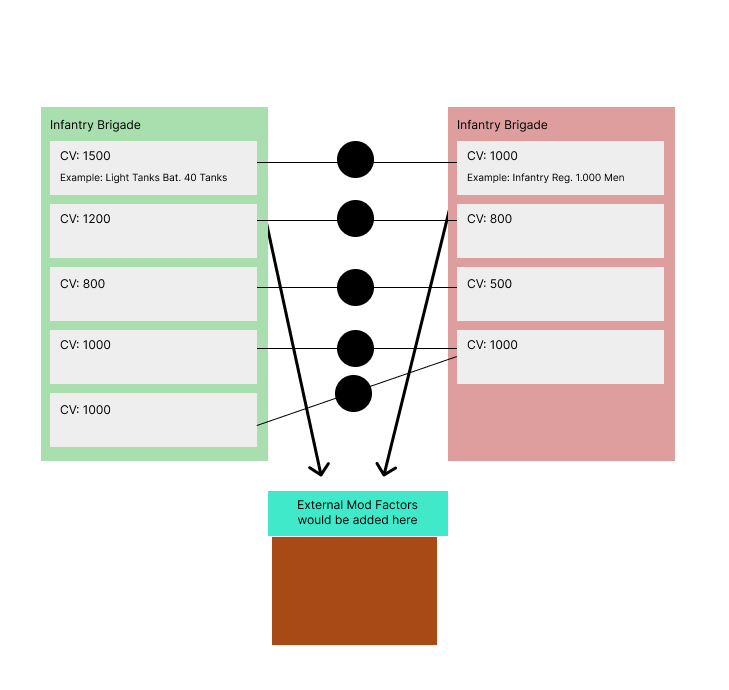
Factoring in External Modifications
Before the battle begins, a critical component of wargame development is accounting for external modification factors. These encompass various elements, such as the battlefield’s terrain conditions, the capabilities of different weapon systems, unpredictable weather patterns, and the influence of fortifications. While they might not be active in this particular scenario, these factors play a pivotal role in shaping the outcome of battles within your wargame.
The Nuts and Bolts of Combat Rounds
Now, let’s delve into the heart of combat calculations, which serve as the backbone of your wargame’s mechanics. Battles in your wargame are divided into distinct rounds, each occurring at varying engagement distances. Here’s how it unfolds:
- Round 1 (2,000m): The opening salvo involves a mix of Artillery, Mines, and Air Strikes. These factors set the stage for the unfolding drama.
- Round 2 (1,000m): As the battle draws closer, Mortars and Drones come into play, further intensifying the conflict.
- Round 3 (500m): The engagement distance shortens, bringing infantry and armored units into closer proximity.
- Round 4 (100m): At this point, the battlefield narrows down significantly. It’s a critical juncture where infantry becomes effective against tanks, thanks to factors like man-portable air defense systems (MANPADS).
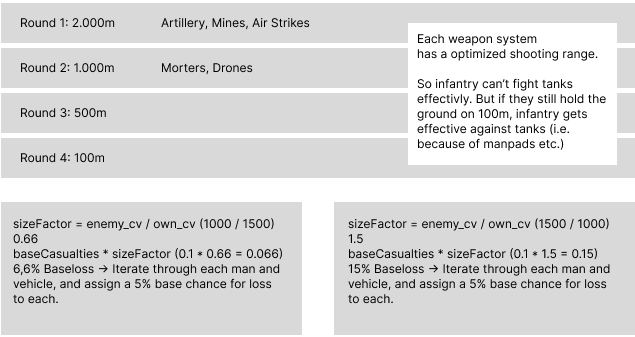
Understanding Casualties
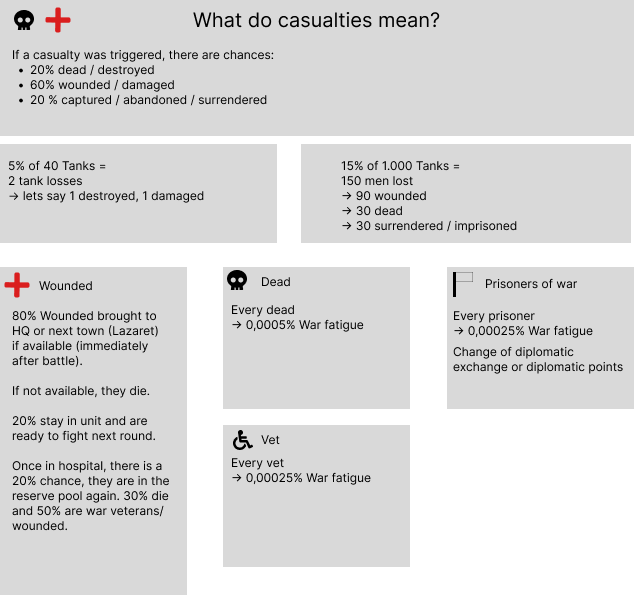
In your wargame, casualties are at the core of the gaming experience. They shape the narrative and the outcome of battles. Here’s a breakdown of how casualties work:
- When a casualty occurs, there are three potential outcomes:
- 20% chance of being declared dead or destroyed.
- 60% chance of suffering wounds or damage.
- 20% chance of being captured, abandoned, or surrendering.
To put this into perspective, consider a scenario where there are 40 tanks. It’s entirely possible that 5% of these tanks, equating to 2 of them, may be lost during the battle. One might be destroyed, while the other could be significantly damaged.
For an infantry force of 1,000 soldiers, the toll can be much higher. With a CV ratio of 1500 to 1000 in favor of the enemy, there’s a 15% chance that casualties will occur. This translates to 150 men lost in the heat of battle, with varying outcomes for each:
- 90 soldiers might be wounded, but with a fighting chance to return.
- 30 may not be as fortunate and could lose their lives.
- The remaining 30 could find themselves captured or surrendering to the enemy.
Managing Wounded Soldiers
In the aftermath of battle, it’s crucial to manage wounded soldiers effectively. In your wargame, 80% of wounded troops are transported to the headquarters or the nearest town, often referred to as the Lazaret. This occurs immediately after the battle, ensuring they receive prompt medical attention. However, for the remaining 20%, without immediate medical assistance, the outcome is grim—they may not survive.
A fascinating aspect of your wargame is that 20% of wounded soldiers who are sent to hospitals have a chance to return to the reserve pool. Additionally, 30% may not make it, while the fortunate 50% become war veterans with lasting impacts on your game’s dynamics.
The Grim Reality of Death
In the realm of your wargame, every death carries a weighty consequence. Each fallen soldier contributes to a 0.0005% increase in war fatigue, a metric that shapes the strategic landscape.
Honoring War Veterans
On the flip side, war veterans also play a significant role. Every war veteran adds a 0.00025% increase in war fatigue, making their experiences and contributions vital to the game’s depth.
Prisoners of War: A Diplomatic Dimension
Capturing enemy soldiers as prisoners of war introduces an intriguing diplomatic dimension to your wargame. Each prisoner contributes to a 0.00025% increase in war fatigue, and their fate might hinge on diplomatic exchanges or the accumulation of diplomatic points.
Unit Consequences: Balancing Victory and Loss
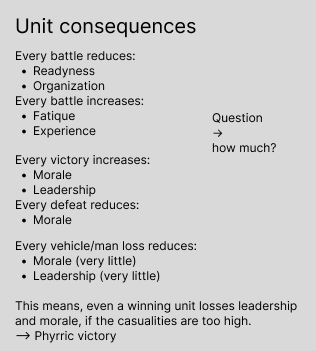
In the world of wargame development, combat is more than just a numerical showdown. It profoundly impacts the units involved, introducing a complex web of consequences:
- After each battle, readiness and organization decrease, reflecting the toll of combat on unit cohesion.
- Fatigue and experience increase as units gain battle-hardened expertise.
- Victorious units experience a boost in morale and leadership.
- Defeats, on the other hand, chip away at morale.
It’s essential to note that even victorious units aren’t immune to the harsh realities of combat. High casualties can erode leadership and morale, transforming a victory into what history refers to as a “Pyrrhic victory” – a triumph that comes at an exceedingly high cost.
As you continue developing your wargame, remember that it’s not just about the battles but also the intricate web of consequences they weave. Balancing these elements adds depth and realism to your creation, offering players an immersive experience that mirrors the complexities of real-world warfare. So, dive into the world of wargame development with a keen eye for detail, and watch your creation come to life with every strategic move and battlefield decision.


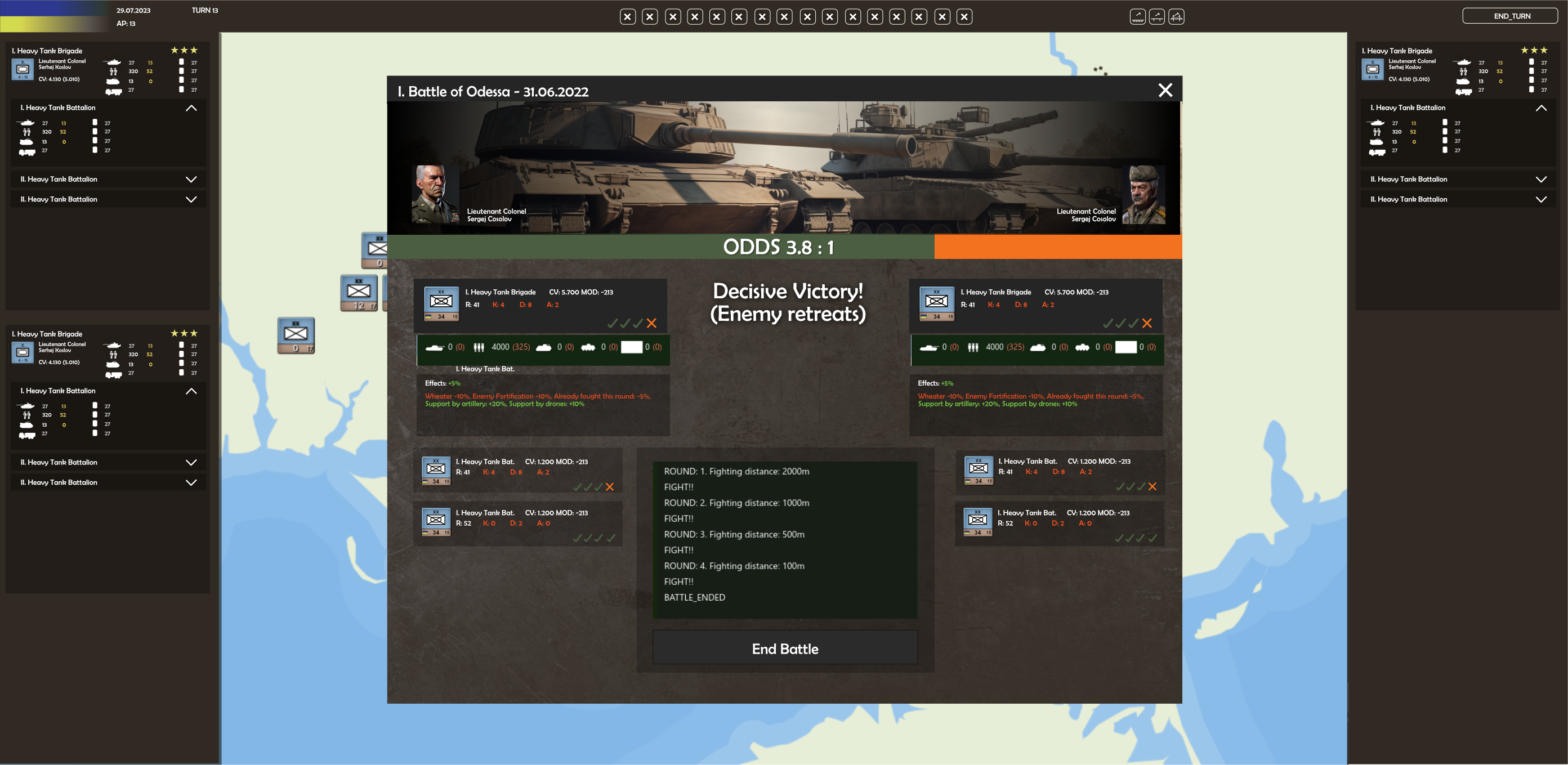
Leave a Reply